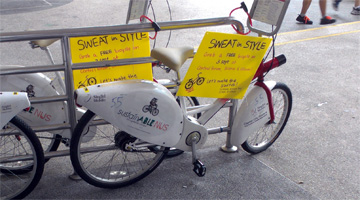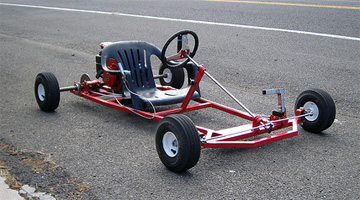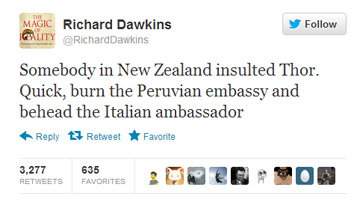|
| |
|
| |
|
|







|
|
TCHS 4O 2000 [4o's nonsense] alvinny [2] - csq - edchong jenming - joseph - law meepok - mingqi - pea pengkian [2] - qwergopot - woof xinghao - zhengyu HCJC 01S60 [understated sixzero] andy - edwin - jack jiaqi - peter - rex serena SAF 21SA khenghui - jiaming - jinrui [2] ritchie - vicknesh - zhenhao Others Lwei [2] - shaowei - website links - Alien Loves Predator BloggerSG Cute Overload! Cyanide and Happiness Daily Bunny Hamleto Hattrick Magic: The Gathering The Onion The Order of the Stick Perry Bible Fellowship PvP Online Soccernet Sluggy Freelance The Students' Sketchpad Talk Rock Talking Cock.com Tom the Dancing Bug Wikipedia Wulffmorgenthaler |
|
bert's blog v1.21 Powered by glolg Programmed with Perl 5.6.1 on Apache/1.3.27 (Red Hat Linux) best viewed at 1024 x 768 resolution on Internet Explorer 6.0+ or Mozilla Firefox 1.5+ entry views: 2386 today's page views: 727 (45 mobile) all-time page views: 3246197 most viewed entry: 18739 views most commented entry: 14 comments number of entries: 1214 page created Thu Apr 17, 2025 21:57:45 |
|
- tagcloud - academics [70] art [8] changelog [49] current events [36] cute stuff [12] gaming [11] music [8] outings [16] philosophy [10] poetry [4] programming [15] rants [5] reviews [8] sport [37] travel [19] work [3] miscellaneous [75] |
|
- category tags - academics art changelog current events cute stuff gaming miscellaneous music outings philosophy poetry programming rants reviews sport travel work tags in total: 386 |

| ||
|
 The oft-hammered-here incumbents have shown some willingness to make some changes, for which they should be feted and given the benefit of the doubt that it's not just another wayang (which the "national conversation" is, predictably, slowly becoming) His Royal Highness was sufficiently disturbed by the improbable sight to query whether it was common for senior citizens to exercise under the midday sun, his concern perhaps driven by the fallout of his sibling's overexposure to the same a few weeks ago. Not that I see too much wrong with that - let some lucky girl be Disney Princess Of The Day, come on - and so it seems, others think so too as well. Managed another 10km "run" this morning after four hours' sleep, and made it to about 4.5km at a steady pace, hit 35 mins for 5km, and mostly brisk-walked back in 1:16:52, a two minute improvement, disappointing given how the route was kinder than RunNUS. Not much improvement in knee condition, but 2.4km should be alright. Seen Around NUS  Couldn't think of an excuse to hop on There has been a push for more cyclist-friendly measures after a spate of unfortunate accidents, including the provision of more dedicated bicycle lanes. Little has changed since I covered this in passing five years ago, with the inconveniently intermediate speed of bicycles causing them to belong neither on the roads nor on the walkways. Unfortunately, the relatively low observed usage of bikes makes it difficult to justify permanently dedicated lanes as of now, in my opinion. I had been saving up for a repeat rant about the rare specimens who insist on keeping to the middle of narrow two-man-width pathways come what may, as if it would kill them to pick a side, and who sometimes even drift into a blocking position. However, upon closer reflection and examination, I discovered that some of these champions appear to want but the attention of eye-contact. Other times, it almost seems like a contest of who can ignore the oncoming guy longest. Strangely, this is almost uniquely a campus phenomenon. The other complaint is more universal, but scarcely less irritating - the line-of-chatting-friends-all-abreast formation, rightly picked on by an expat observer, which is mostly why I try to hang back when in a group. Give way mutually will lose face ah? While I have no solid evidence on this, my suspicion is that a goodly proportion of students, at least, try very hard to always flock in a group in the same manner as they try to always eat in a herd. Hmm. On yet more transport-related news, the insistence by the relevant minister that public transport is significantly subsidized by the government struck some as odd, considering where the subsidies ultimately come from in the first place (hint: it's not the government). Of course, it could be said that the average commuter is subsidized on the whole, but the fact that the assertion was made is still strange to begin with, considering that transportation is obviously a public good - how is letting your workers get to their workplaces to generate GDP something to claim additional credit for? Skipping to a new (or not) development from DARPA: Not quite an AT-AT yet, but it's a start On the future of public transport here, new MRT lines have been planned, but one can't help but dream about even more ambitious introductions, such as nonstop express trains (brought up here). Beyond that, however, it is hard to look past how inefficient cars are actually - while their main utility is in hauling their passengers from place to place quickly and safely, their payload is generally only from 6% to 20% of the total weight moved (assuming one to four passengers of 80kg each, in a vehicle weighing 1400kg on average) While we do have more efficient options - bicycles and motorcycles (average weight maybe 150kg?) - they are rightly considered to be less safe. As for more exotic devices, golf carts are kinda slow (often limited to less than 24km/h) but still dangerous, about the same as Segways, while lawnmower-powered rides go up to 140km/h (!), and can be rather fuel-efficient besides. Given all this, what would be the ideal urban vehicle, technically speaking? I would go for a stable chassis of go-kart dimensions and lightweight frame material powered by a mower-grade engine, with a top speed capped at perhaps 80km/h, leaving required development mostly in the area of driver protection during collisions (plenty of airbags, maybe?), though damage should be somewhat mitigated by the relatively light weights involved, especially if all other vehicles on the road were also of this form; F=ma, after all.  What it could look like (seatbelt and airbags not included) (Source: zigwire.com) Further innovations are possible. While self-driving cars look certain to be an eventual reality, what if it became the norm for such cars to further cooperate with each other? Intuitively, organizing traffic in a situation where all vehicles are networked-autonomous should be easier than when, say, only half of them are, since there would remain some uncertainty about the action of human drivers in the latter case. Some theoretical advantages of such an integrated system would include:
As to the expected gain in efficiency, a simulation could probably be written. There would, of course, be well-founded concerns and objections, such as:
Still, it's nice to picture what could be. Dishes Up From Test-tubes On to workers, Sakae Sushi was all over the news for claiming that they were unable to find cleaners despite offering the princely salary of S$3000 a month. Many were predictably skeptical, given how much above the market norm this amount was. As it was, once the news broke, they had 300 applicants within days, which makes one wonder where they had been advertising the job before this. As it turned out, the offer was not quite that simple - the originally-stated 9 hour day was quickly revised to 12 hours, with a six-day work week, which comes out to S$8.72 an hour following Ministry of Manpower guidelines of a 44 hour work week, with overtime paid at 1.5 times the normal rate. While higher than the norm (and indeed working in fast food), it is not that outlandish, even for manual labour. I have two observations to make. Firstly, I was taken aback by some of the responses to this offer. While there may well have been an implicit suggestion that local workers are picky (which as we have seen, they probably aren't if the price is right), the other objections are mind-boggling. For example, stating that the wage is lower than the lowest minimum wage in Australia or the USA, when USA minimum wages are commonly about S$9/hour - and isn't washing dishes more or less the definition of a minimum-wage job? I tend to side with the little guy, but find it hard to do so here. Secondly, it was revealed that foreign workers in fact cost the company a comparable amount - S$2300 to S$2900 - but the workers themselves get far less after the contractors take their cut, which doesn't seem equitable to the workers, but what do I know. Here I have to say that Bangladeshi workers are generally very nice fellows, with one of them even thanking me for sharing a seat on the bus with him! If only they would refrain from picnicking in the middle of the pavement... Ran Off With The Band The banding system for secondary schools has been scrapped (see how it was), a daring move which should be applauded, then recognized to perhaps not mean that much - while it should do away with some busywork for the administrators and teachers, parents and prospective students are not going to suddenly recognize all schools as equal. Additionally, it seems like the awards have not been completely done away with either, instead being replaced by recognition for measures such as "student all-round development" and "character and citizenship education". How they are going to go about quantifying that, I have no idea; then again, it seems that they have been doing it all this while, though without much relation to the banding. Hopefully this doesn't simply presage a shift from compulsory tuition to compulsory volunteer work and other wayang. And Here We Have It The organizers of the Mitosis Detection contest have returned the results on the test set, and it turned out to have a rather higher precision, but correspondingly lower sensitivity, than I had expected. On the off-chance that anyone's interested, researchers from ETH Zurich/HCI Heidelberg and A*STAR have placed their approaches, both refreshingly distinct from mine, online (a third contribution from Warwick, not yet available, uses a Gaussian Mixture Model). Am eagerly anticipating picking up more much-needed ideas from the event. On the practical side, I'm beginning to be resigned to better (i.e. more) data being more important than "better" classification techniques, especially when there is little data to begin with, i.e. a results-focused enterprise might do well to allocate resources towards the two keeping this in mind. Do-do-dota! Had a honest-to-goodness all-human 3 vs. 3 series for the first time in ages on Saturday night, getting home to watch United score four in the second half to cap it all nicely. Reviews follow: Game 1: Warlock/Lich/Phantom Assassin vs. Tiny/Drow Ranger/Ogre Magi. Warlock held ranged advantage in the middle lane, while Lich as usual had an almost unfair early start (probably viz. infinite-mana Nova). Sentinel pushed middle aggressively ("Plan B") very early on, which might not be advisable in a three-man game, ending up significantly underleveled. Illusions can be fun! Oh, and Aghanim's now upgrades Warlock's ultimate to two Infernals, which it should be remembered can be deadly even simply running alongside enemy heroes, with their Permanent Immolation (30-50 damage/second, stacks). Build was Ring of Regen/Ring of Basilius, fueling utility spell Shadow Word. Game 2: Omniknight/Death Prophet/Sand King vs. Viper/Drow Ranger/Axe. Top lane was Omniknight vs. Axe, probably not one of Axe's better matchups especially as Omni gets geared up. Viper had the early hand over Death Prophet in the middle as is to be expected, though pushing was not easy with spammable Carrion Swarm. Sand King's Sandstorm could unfortunately be countered with Silence, but he provided a welcome outlet for the one skill point in Repel taken early, a classic combo. Farming proved simple enough after Vladimir's Offering, while Death Prophet provided Exorcism for downing towers. Game 3: Enigma/Razor/Spirit Breaker vs. Undying/Drow Ranger/Lion. Wasn't too hot on Enigma, but decided not to repick, and spammed Gauntlets of Ogre Strength to boost his lousy health pool (my days of running about with naked Pugnas are over), and plenty of Tangos. They never got turned into Bracers though, with conservative play required against Lion, and Blink Dagger was skipped too for straight Guinsoo's Scythe of Vyse after the gold rolled in from some fortunate-not-to-be-pre-disabled Black Holes, which were more damaging than I recalled. Standard team-fight initiation: Malefice on the fighter, Guinsoo on the caster, Midnight Pulse the area, everybody dives in. Mekansm was a late acquisition of convenience that saw some use. Bonus observation: It is probably better to be overeager in using skills - particularly targeted stuns - than too careful; perfect is the fatal enemy of good enough. Footying The Bill Missed the Malaysia Cup again, though just as well this time, as the Lions put on a simulacrum of a football match against Johor FC. Well, it's not the first, and definitely will not the last, time where two sides whom will both go through by drawing somehow play well below their usual level in the final round of a group stage. Solution: don't buy a ticket. It was meanwhile a washout in Man vs. Ham, with all bets for the week falling through - can't be too sad at City and Chelsea being held, though, even as West Ham failed to beat Norwich, and Southampton were trounced by Arsenal. United won handsomely at Wigan to make up the distance, following Rule Number One:  (Source: Somewhere on the Internet) Late Breaking Tweet Of The Day It's becoming like an annual observance now:  (Source: twitter.com) Next: Been Up To
Trackback by free google advertising
|
||||||||||
 Copyright © 2006-2025 GLYS. All Rights Reserved. |
||||||||||